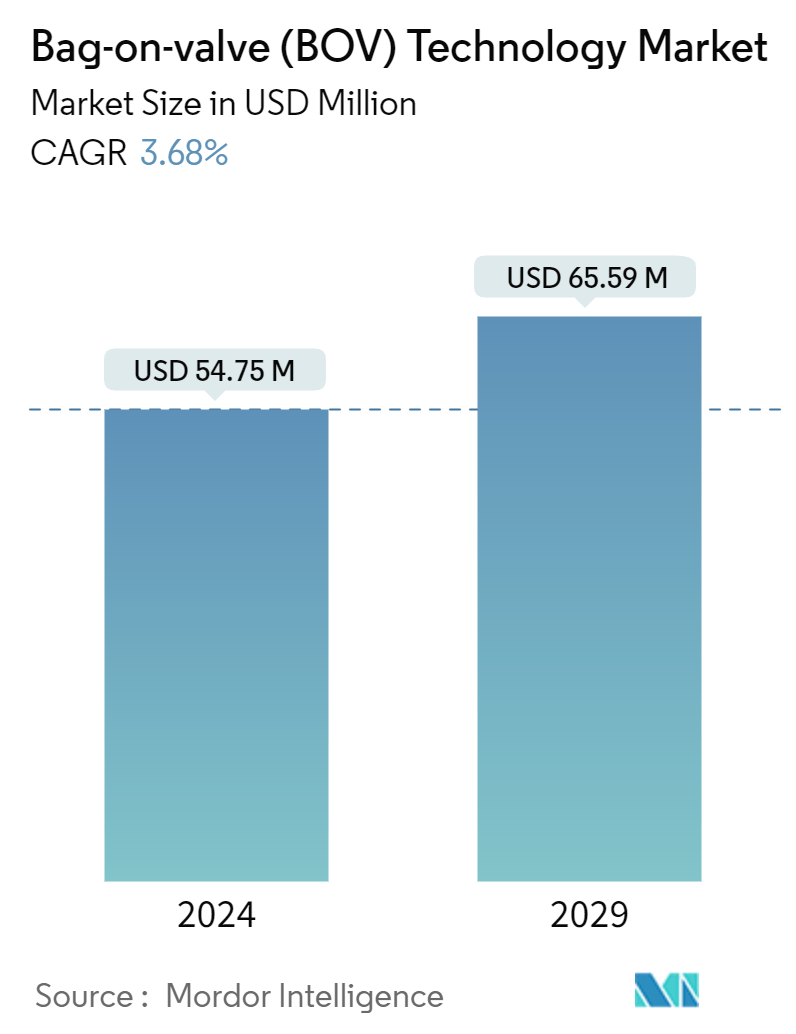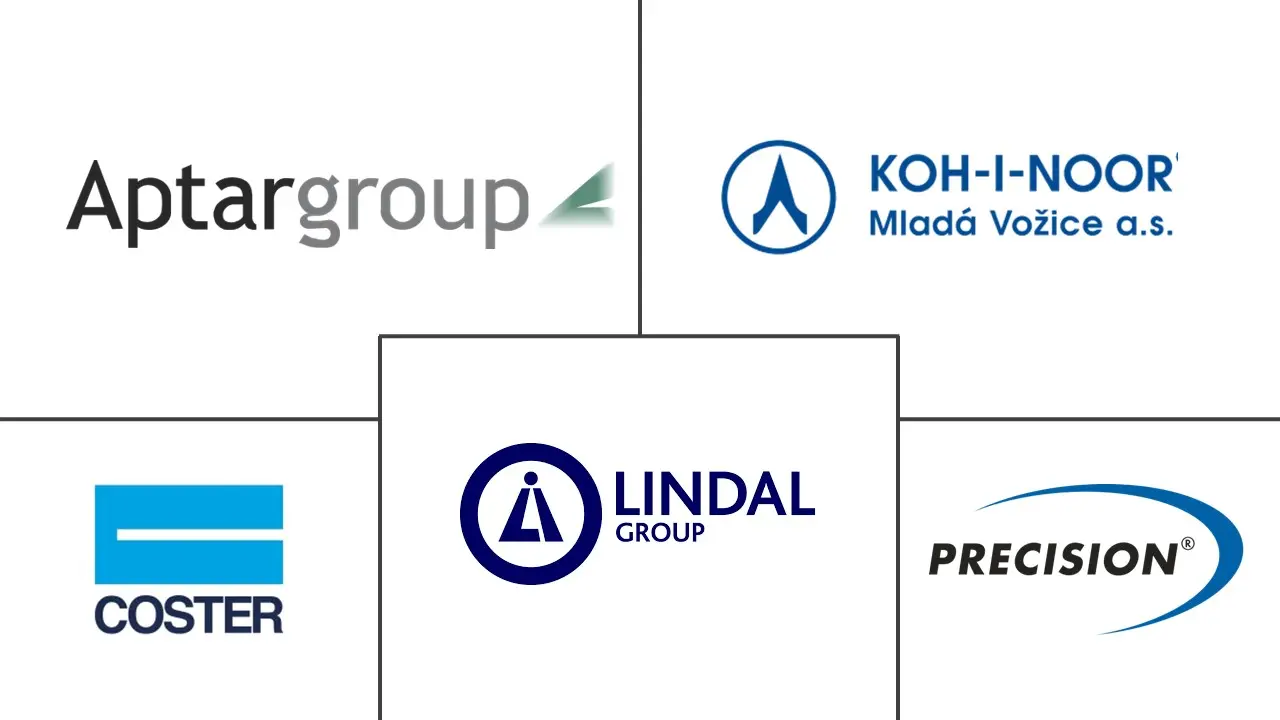Market Size of Bag-on-valve (BOV) Technology Industry

| Study Period | 2019 - 2029 |
| Market Size (2024) | USD 54.75 Million |
| Market Size (2029) | USD 65.59 Million |
| CAGR (2024 - 2029) | 3.68 % |
| Fastest Growing Market | Asia Pacific |
| Largest Market | North America |
Major Players
*Disclaimer: Major Players sorted in no particular order |
Bag-on-valve (BOV) Technology Market Analysis
The Bag-on-valve Technology Market size is estimated at USD 54.75 million in 2024, and is expected to reach USD 65.59 million by 2029, growing at a CAGR of 3.68% during the forecast period (2024-2029).
The bag-on-valve (BOV) technology market is growing due to several factors. The demand for eco-friendly packaging is rising as consumers and businesses aim to reduce their environmental impact. BOV technology supports this trend by using environmentally friendly propellants and materials, reducing waste, and promoting sustainability. Additionally, the need for contamination-free packaging has increased demand for BOV systems, which keep products sealed from air and contaminants until use, preserving integrity and extending shelf life. The pharmaceutical industry's extensive use of BOV technology also drives the market's growth, as it delivers precise doses hygienically and effectively, meeting stringent safety and accuracy requirements.
The shift to eco-friendly packaging solutions has driven manufacturers to adopt BOV technology to meet consumer preferences and comply with environmental regulations. For instance, as per an article published by Packmile in September 2023, BOV technology aligns with sustainability goals by utilizing compressed air or inert gases as propellants, reducing reliance on harmful chemical propellants. This shift is crucial as consumers become more conscious of their ecological footprint and demand greener packaging solutions. Traditional aerosol systems often use hydrofluorocarbons (HFCs) or other harmful propellants, which are less environmentally friendly. In contrast, BOV technology can utilize environmentally benign propellants and materials that contribute to reduced environmental impact. Thus, this demand for greener alternatives has expanded the market for BOV systems, thereby boosting the market's growth.
Moreover, the extensive use of BOV technology in the pharmaceutical sector has significantly contributed to the market's growth. As the demand for advanced drug delivery systems increases, pharmaceutical companies are increasingly adopting BOV technology owing to its advantages in the pharma industry. BOV technology is increasingly utilized in the pharmaceutical industry for its benefits in controlled dosing, contamination-free delivery, and enhanced product stability. BOV systems ensure precise and accurate dosing while protecting the product from air and contaminants by keeping the medication in a sealed, flexible bag within the canister. This maintains the medication’s purity and extends its shelf life, which is crucial for sensitive pharmaceuticals. Additionally, BOV technology enables the hygienic and efficient application of drugs in forms such as sprays or foams, making it a versatile and valuable tool in pharmaceutical packaging.
In pharmaceuticals, the bag-on-valve technology used for aerosol products is applicable for wound care, inhalational products, and dermatological products, and hence, the growing burden of such diseases is expected to increase demand for the BOV technology in the pharmaceutical sector, driving the market's growth. For instance, an article published in April 2024 in the Wound Journal highlighted that chronic wounds impacted over 6.5 million individuals in the United States in 2023, which led to an annual cost of USD 25 billion for the healthcare system. On average, patients with wounds account for 25% to 40% of hospital bed occupancy. Thus, BOV technology helps to deliver wound care products such as antiseptic spray, hydrogel, and ointment, which is anticipated to bolster the market's growth.
The growth of the BOV technology market is driven by the increasing preference for eco-friendly packaging, heightened awareness of contamination-free packaging, and its extensive use in the pharmaceutical industry. However, technical limitations and regulatory challenges are anticipated to restrain the market's growth.

